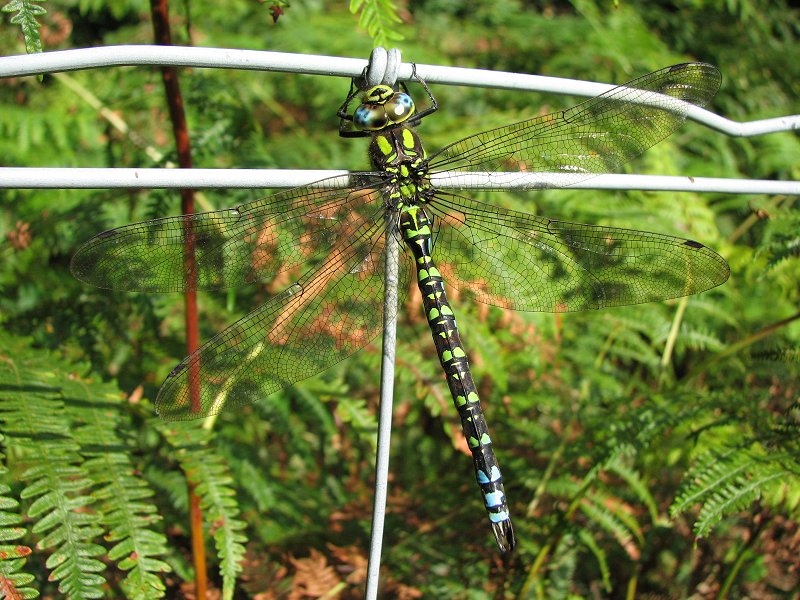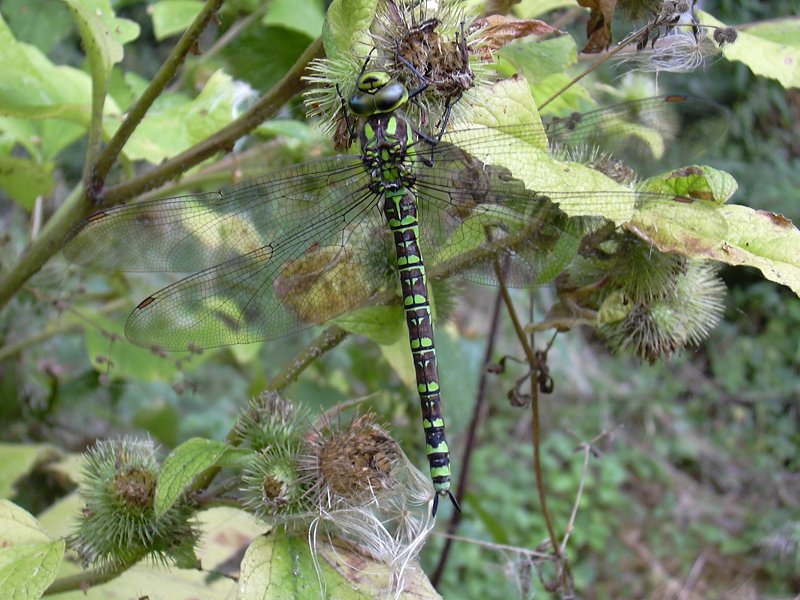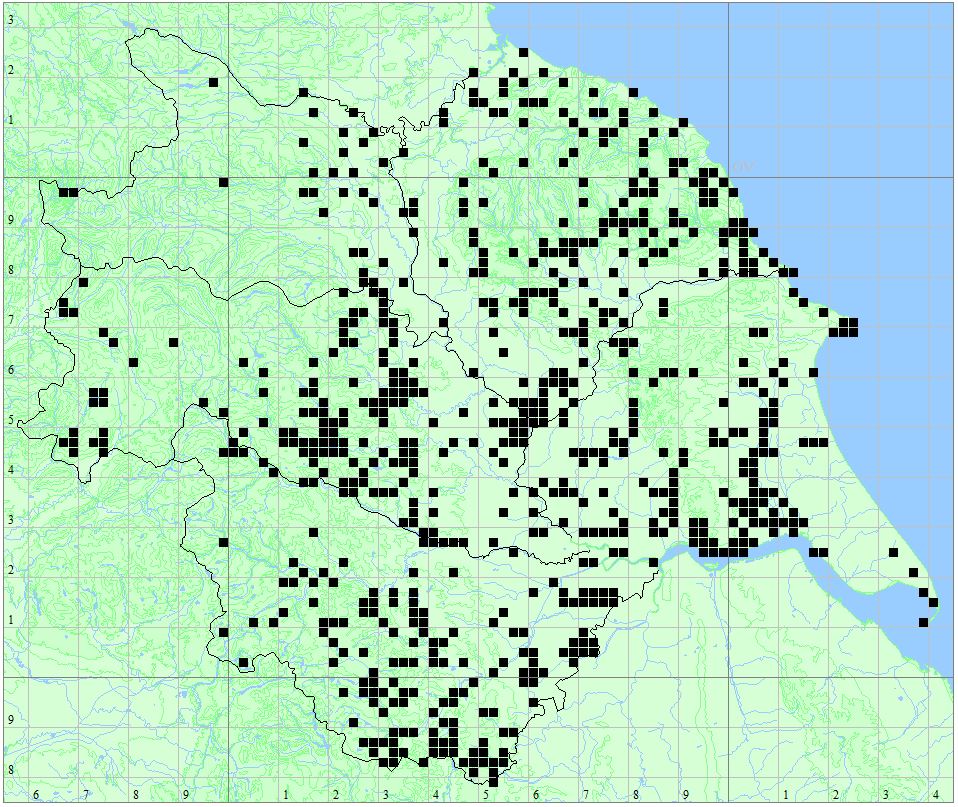<-Previous Species – Next Species->
Length
70mm, Wings 98mm.
Males
Thorax – green and brown with broad green antehumeral stripes; abdomen – yellow triangle segment 2, green spots segments 3-8; undivided blue spots segments 9-10; wings brownish tinge; legs brown-black.
Females
Thorax – green and brown with broad green antehumeral stripes; abdomen brown with green spots, undivided green spots on segments 9-10.
Habitat
Lakes and ponds, including small garden ponds where it is the most likely Aeshnidae to be encountered. Also found along canals and ditches. Will feed away from breeding sites, sometimes being encountered in sheltered areas, such as woodland rides and hedgerows.
Behavior
Males are territorial, with a single male usually found at a small pond. There is however a constant change of males throughout the day. This is an inquisitive species, often approaching close to the observer. They can be active in dull weather, often on the wing late into the evening, even hunting when it is raining. Copulation takes place away from water, lasting for around two hours. The female oviposits into waterside vegetation, moss or bare soil above water, often in poor weather. Larvae emerge after two to three years on tall marginal vegetation. They mature away from water over a four to six week period, before returning to suitable sites to breed.
Flight Period
Distribution Map
Locations
- Rodley Nature Reserve
- Moorgates Quarry LNR
- Thorne Moors – Humberhead Peatlands NNR
- Thorpe Marsh
- Oakhill & Goole Brick Ponds
- Paull Holme Strays
- Treeton Dyke
- Rabbit Ings
- Forge Valley NNR
- Walton Colliery Nature Park
- The Yorkshire Arboretum
- Nosterfield Local Nature Reserve
- Timble Ings
- Fairburn Ings
- Potteric Carr
- Dundale Pond
- The Tarn, Goathland
- Spurn Point
- Skipwith Common
- Saltmarshe Delph
- River Hertford
- Pulfin and High Eske Nature Reserve
- Pocklington Canal
- North Cave Wetlands
- Market Weighton Canal and Newport Ponds
- Leven Canal
- Filey Dams
- Eastrington Ponds
- Broomfleet Washlands
- Allerthorpe Common
- Tophill Low Nature Reserve


